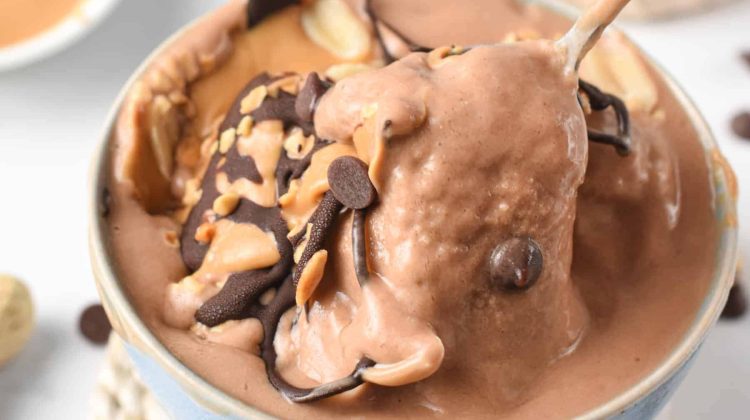
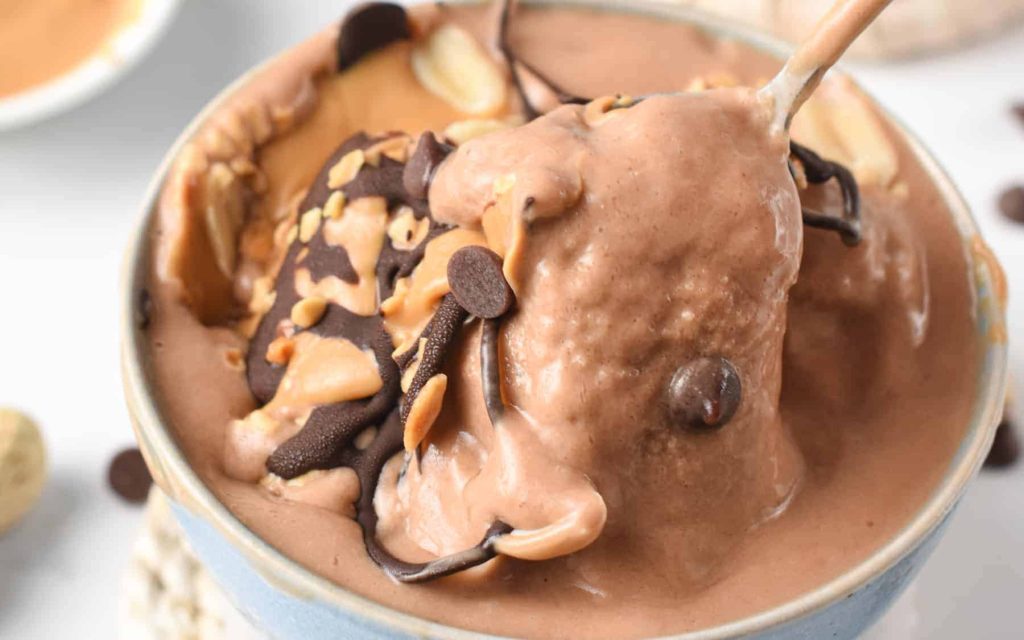
Protein fluff is a light and fluffy dessert or snack that has gained popularity among fitness enthusiasts and individuals looking for a protein-packed alternative to traditional sweets.
It is made primarily from protein powder and a liquid base, with the option to add flavorings and sweeteners.
Protein fluff has a mousse-like texture and offers a guilt-free treat for those seeking a nutritious indulgence.
Adding protein into your diet brings various benefits. Protein plays a crucial role in muscle development and repair, making it essential for individuals engaged in regular exercise or strength training.
Also, protein-rich foods promote satiety, aiding in weight management and preventing overeating.
Protein has a higher thermic effect, boosting metabolism and supporting fat burning. Protein helps regulate blood sugar levels by slowing down carbohydrate digestion and absorption.
Using few ingredients in protein fluff recipes offers simplicity and convenience. It saves time, making it suitable for individuals with busy lifestyles, and is cost-effective, as it reduces overall expenses.
Limited ingredients allow for customization and versatility, enabling individuals to personalize the flavor and texture of their protein fluff.
The simplicity of using few ingredients makes protein fluff accessible to all, regardless of culinary skills or kitchen equipment.
Understanding the concept of protein fluff, the benefits of incorporating protein into your diet, and the advantages of using few ingredients will enable you to create delicious and nutritious protein fluff with ease and convenience.
Ingredients for Protein Fluff
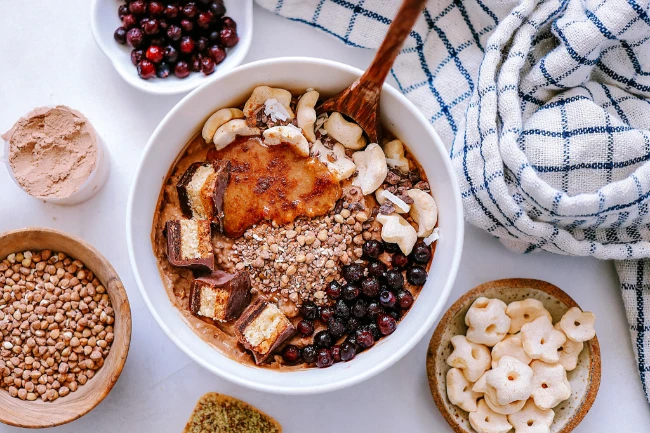
Main ingredient: Protein powder When making protein fluff, the key ingredient is protein powder. There are various types of protein powder available, and choosing the right one is essential for achieving the desired texture and flavor.
Types of protein powder suitable for protein fluff:
Whey protein: This is one of the most common and widely available options. It has a creamy texture and comes in different flavors.
Casein protein: Casein protein powder creates a thicker and denser consistency, which can contribute to a more pudding-like texture.
Plant-based protein: Options like pea protein, soy protein, or rice protein are suitable for individuals following a vegetarian or vegan diet.
Recommended flavors for enhanced taste: Protein powder often comes in a variety of flavors, such as chocolate, vanilla, strawberry, or cookies and cream. Choosing a flavor that complements your preferred taste profile can enhance the overall enjoyment of your protein fluff.
Liquid base :The liquid base is crucial for achieving the desired consistency and creaminess of the protein fluff. There are several choices available, each with its own characteristics.
Choices of liquids.
Milk: Options include cow’s milk, almond milk, soy milk, or any other preferred variety. Milk provides richness and creaminess to the fluff.
Water: Using water as the liquid base is a lower-calorie option, which can be beneficial for those watching their overall calorie intake.
Importance of selecting low-calorie options: Opting for low-calorie liquid options, such as unsweetened almond milk or water, helps to keep the calorie content of the protein fluff in check, especially if you’re mindful of your overall caloric intake.
Optional flavorings and sweeteners to enhance the taste and personalize your protein fluff.
You can incorporate additional flavorings and sweeteners.
Examples of flavorings:
Vanilla extract: Adding a splash of vanilla extract can provide a subtle and aromatic flavor to the protein fluff.
Cocoa powder: If you enjoy a chocolatey taste, incorporating cocoa powder can give your fluff a rich and indulgent flavor.
Examples of sweeteners:
Stevia: Stevia is a popular natural sweetener that can be used in small amounts to add sweetness without adding calories or affecting blood sugar levels.
Other sweeteners: Depending on personal preferences and dietary restrictions, you can use alternative sweeteners like monk fruit extract, erythritol, or honey. Be mindful of the overall sweetness and adjust according to taste.
Consider your personal preferences, dietary restrictions, and desired flavor profile when selecting protein powder, liquid base, and optional flavorings and sweeteners for your protein fluff. By choosing the right ingredients, you can create a delicious and customized protein fluff that suits your taste preferences and nutritional needs.
Equipment and Preparation
Blender or mixer
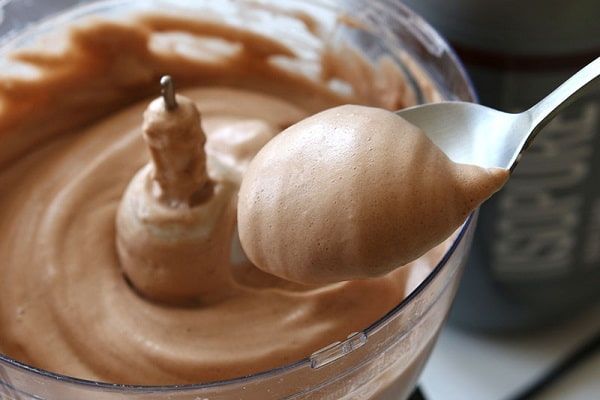
Explanation of why a blender or mixer is necessary: To achieve the light and fluffy texture of protein fluff, a blender or mixer is essential. These appliances help incorporate air into the mixture and create the desired consistency.
Alternatives for those without a blender: If you don’t have a blender or mixer, there are a few alternative methods you can try:
1.Hand whisking: While it may require more effort and time, you can whisk the mixture vigorously by hand. This method may not yield the same level of fluffiness as using a blender, but it can still create a creamy texture.
2.Electric hand mixer: If you have an electric hand mixer, it can be a suitable substitute for a blender. Use the whisk attachment and mix the ingredients on medium to high speed until the desired consistency is achieved.
Freezing the liquid base
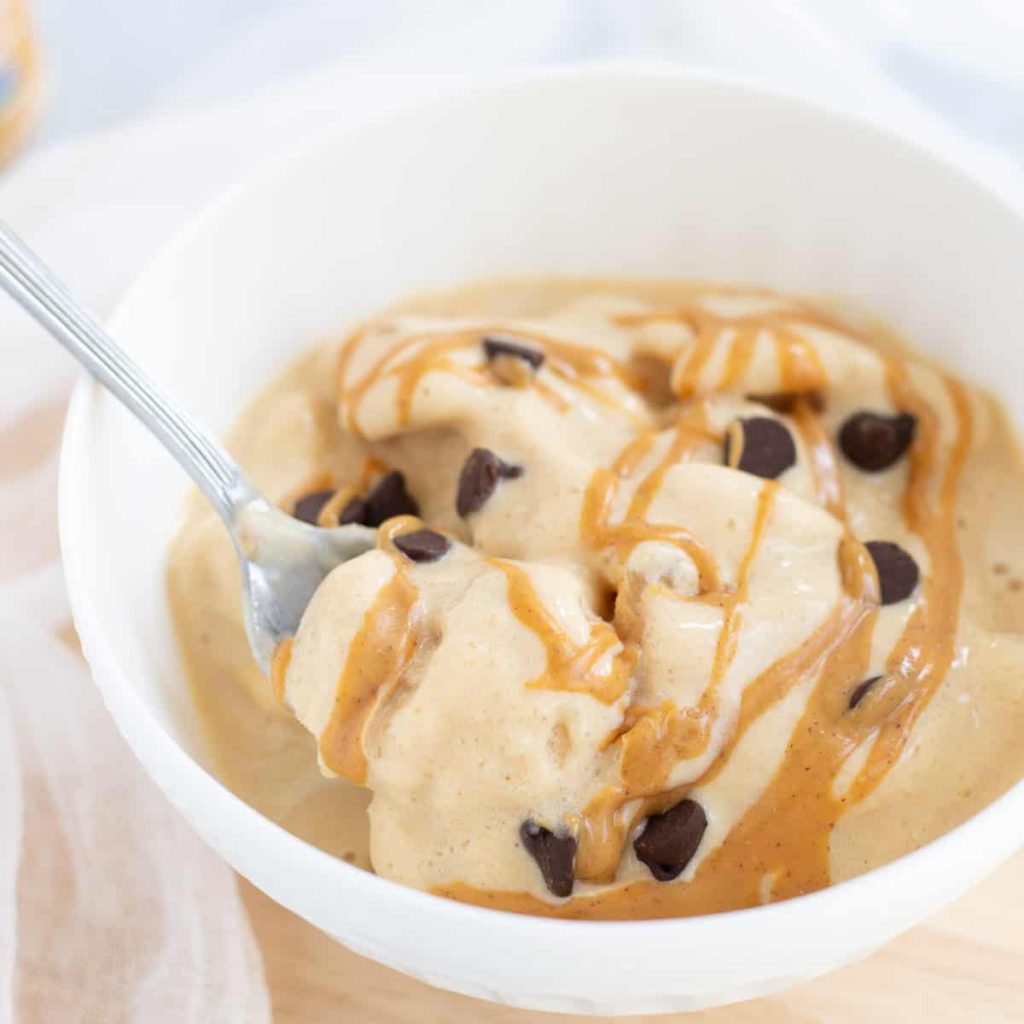
Benefits of using frozen liquid:
Freezing the liquid base is a crucial step in making protein fluff as it helps create the fluffy texture.
When the liquid is frozen, it solidifies and allows for air incorporation during blending, resulting in a lighter and fluffier final product.
Preparation and timing for freezing:
Pour the liquid base into a suitable container, leaving enough space for expansion during freezing.
Place the container in the freezer and let it freeze for at least 3-4 hours or until it becomes completely solid. The exact freezing time may vary depending on the volume and temperature of your freezer.
It’s recommended to check the firmness of the frozen liquid base by gently pressing it with a spoon. If it’s solid and doesn’t leave an indentation, it’s ready to be used for making protein fluff.
Plan ahead and freeze the liquid base in advance to ensure it’s fully frozen and ready for the next steps in the protein fluff preparation.
By using a blender or mixer, you can achieve the desired light and fluffy texture of protein fluff. If you don’t have access to these appliances, alternatives like hand whisking or an electric hand mixer can be used.
Freezing the liquid base is important for creating the fluffy consistency, so be sure to freeze it adequately before proceeding with the recipe.
Procedures
Step 1: Prepare the frozen liquid base
Measure and freeze the liquid in an appropriate container:
Select your preferred liquid base, such as milk, almond milk, or water.
Measure the desired amount of liquid based on the serving size you want to make.
Pour the liquid into a suitable container, leaving enough space for expansion during freezing.
Place the container in the freezer and let it freeze for at least 3-4 hours, or until it becomes completely solid.
Freezing times may vary depending on the volume of liquid and the temperature of your freezer.
To ensure it’s fully frozen, gently press the frozen liquid base with a spoon. If it’s solid and doesn’t leave an indentation, it’s ready for the next steps.
Step 2: Adding protein powder
Measure the recommended serving size of protein powder:
Check the packaging or consult the manufacturer’s instructions for the recommended serving size.
Use a measuring scoop or scale to accurately measure the appropriate amount of protein powder for your desired serving.
Add protein gradually to avoid clumping:
Sprinkle a small portion of the protein powder over the frozen liquid base.
Use a spoon or spatula to gently incorporate the powder into the mixture.
Repeat the process, adding the protein powder gradually in small increments, until it is fully mixed in.
This gradual addition helps prevent clumping and ensures a smooth and even distribution of the protein powder.
Step 3: Blending the mixture
Transfer the frozen liquid base with the added protein powder to a blender or mixer.
Begin blending on low speed to break down the frozen liquid and start incorporating the protein powder.
Gradually increase the speed to medium or high and continue blending until the mixture becomes thick, creamy, and attains a fluffy texture.
The blending process may take a few minutes, so be patient and periodically check the consistency until it reaches the desired fluffiness.
If the mixture is too thick to blend smoothly, add a small amount of liquid, such as milk or water, to help facilitate blending. Be cautious not to add too much liquid, as it can affect the fluffiness.
If the mixture is too thin or runny, gradually add more protein powder to thicken it. Sprinkle in small amounts and blend until the desired consistency is achieved.
By following these step-by-step instructions, you can create a delicious protein fluff with a light and fluffy texture.
Properly freezing the liquid base, adding protein gradually to avoid clumping, and blending the mixture to the desired consistency will result in a satisfying protein-packed treat.
Optional Substitute and Enhancements for Protein Fluff
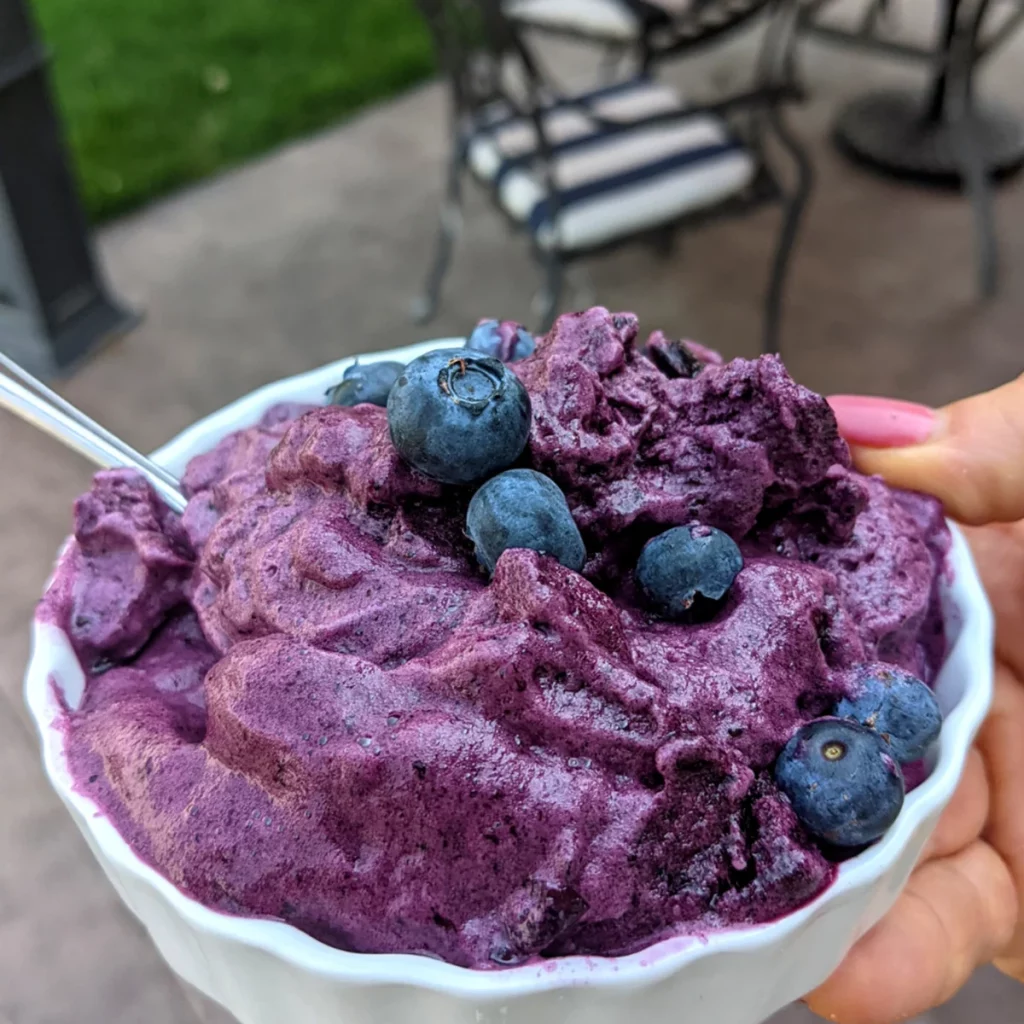
Texture modifications for protein fluff
You can make protein fluff even creamier and fluffier by incorporating certain ingredients.
Consider adding a dollop of Greek yogurt to the mixture. This not only enhances the creaminess but also provides an additional protein boost.
Another option is to blend in cottage cheese, which can contribute to a thicker and more substantial texture, resembling a cheesecake-like consistency.
For a lighter and airier texture, fold in a small amount of whipped cream, adding a delightful touch to your protein fluff.
Flavor variations for protein fluff
Protein powder comes in a variety of flavors, and incorporating different flavors can provide exciting variations for your protein fluff.
Explore options such as chocolate, vanilla, strawberry, or cookies and cream protein powder to create diverse flavor profiles.
Select flavors that complement your taste preferences and consider how they will pair with other ingredients in your protein fluff.
Be creative by combining multiple protein powder flavors to create unique taste combinations in your protein fluff.
Adjust the sweetness level by adding sweeteners like stevia, honey, or maple syrup in small amounts, according to your preference.
Enhance the flavor profile by incorporating natural extracts like almond, coconut, or mint into your protein fluff.
By exploring texture modifications and flavor variations specifically tailored to protein fluff, you can create a customized and enjoyable experience.
Incorporating ingredients like Greek yogurt, cottage cheese, or whipped cream can enhance the creaminess and fluffiness of your protein fluff.
Experimenting with different protein powder flavors, as well as combining flavors and sweeteners, allows for a wide range of delicious and personalized protein fluff options.
Serving and Storage of protein fluff
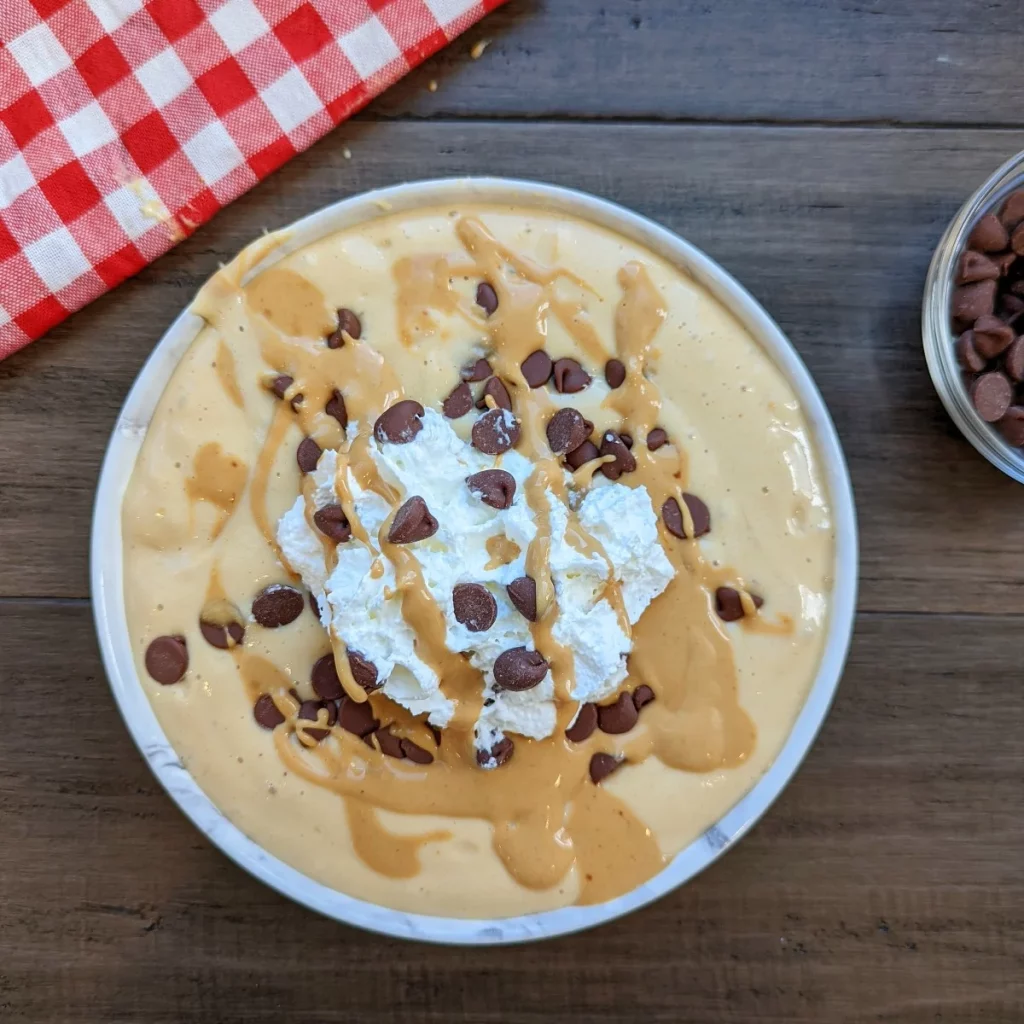
Best serving methods and presentation ideas
Consider adding toppings such as fresh berries, sliced fruits, crushed nuts, or granola to enhance the flavor and add texture to your protein fluff.
Sprinkle a dusting of cocoa powder, cinnamon, or shredded coconut on top for an extra touch of visual appeal and flavor.
Drizzle a small amount of honey, nut butter, or low-calorie syrup over the protein fluff for added sweetness and richness.
Serve your protein fluff in bowls or dessert glasses for an elegant presentation.0
Mason jars or transparent containers can showcase the layers and colors of your protein fluff.
For on-the-go enjoyment, consider using portable containers with secure lids to keep your protein fluff fresh.
Storage guidelines
If you have leftover protein fluff, it’s best to store it in an airtight container in the refrigerator.
Refrigeration helps maintain the texture and freshness of the protein fluff for a short period, usually up to 2-3 days.
If you plan to store protein fluff for an extended period or want to enjoy it as a frozen treat, you can transfer it to a freezer-safe container and freeze it. However, note that the texture may change slightly upon thawing.
You can enjoy protein fluff when it is freshly prepared. Over time, the texture may become denser and less fluffy due to the protein powder absorbing moisture. Protein fluff should be eaten within a few hours of preparation for the optimal texture and taste.
If storing in the refrigerator, consume it within 2-3 days to ensure the best quality. You can keep protein fluff frozen for up to a month, but the texture may be different upon thawing.
By following these serving and storage guidelines, you can present your protein fluff in an appealing manner and ensure its freshness for the best taste and texture.
Experiment with different toppings and garnishes to add variety, and use suitable containers for serving and enjoying your protein fluff.
Remember to refrigerate or freeze leftovers properly, considering their shelf life and potential textural changes over time.
Frequently Asked Question
The best mix for unflavored protein powder depends on personal preference, but commonly used options include blending it with fruits, nut butter, or incorporating it into recipes like smoothies, oatmeal, or baked goods for added protein boost and flavor.
Yes, you can add honey to whey protein. Honey can be a natural sweetener that adds flavor to your whey protein shake or recipe.
Just be mindful of the amount you add, as honey contains calories and can affect the overall nutritional profile of your protein mix.
Yes, you can find protein powder without flavor.
Unflavored protein powder is available in the market and is a popular option for those who prefer a neutral taste or want to have more flexibility in adding their own flavors and ingredients to their protein shakes or recipes.
Unflavored protein powder can be easily mixed into various foods and beverages without altering their taste.
Yes, protein powder does expire. It typically has a shelf life of 1-2 years from the date of manufacture, and it is important to check the expiration date on the packaging and consume it before it expires for optimal quality and effectiveness.
Protein powder is safe when taken in moderation, but excessive intake or individual factors can lead to potential side effects such as digestive discomfort or allergic reactions.
It’s important to follow recommended serving sizes and consult with a healthcare professional if you have any concerns about using protein powder.
Related Articles
mcgriddles-vs-mcdonalds-the-protein-showdown/
how-to-make-a-healthy-protein-coffee-smoothie/
25-protein-packed-dinners-for-losing-weight-building-muscle/
7-costco-foods-that-are-packed-with-protein/
the-ultimate-guide-to-subways-highest-protein-sandwich-options/
Conclusion
Protein fluff is a delicious and versatile treat that can be easily prepared with just a few ingredients.
By following the recipe and procedures in this article, you can create a light and fluffy protein-packed dessert that satisfies your taste buds and supports your dietary goals.
Incorporating variations and enhancements, such as texture modifications and flavor variations, allows for endless customization options to suit your preferences. Knowing the best methods for serving and storing protein fluff ensures optimal presentation and freshness.
Whether you enjoy it as a post-workout snack or a guilt-free dessert, protein fluff provides a nutritious and enjoyable way to incorporate protein into your diet.
So, gather your ingredients, get creative, and indulge in the delightful world of protein fluff!
